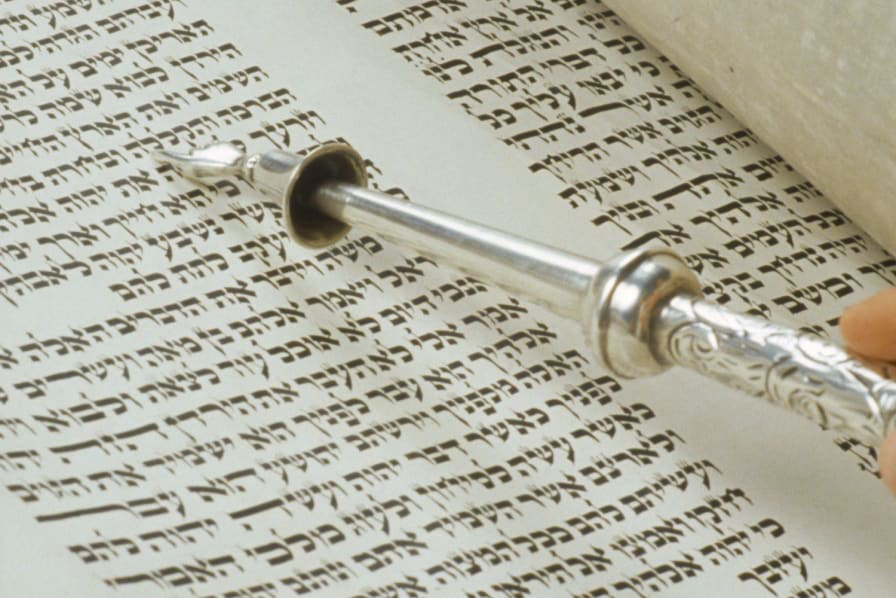Rabbi Joshua ben Korchah said: From the tree under which they hid themselves, they took leaves and sewed (them), as it is said, "And they sewed fig leaves together..." (Gen. 3:7). Rabbi Eliezer said: From the skin which the serpent sloughed off, the Holy Blessed One took and made coats of glory for Adam and his wife, as it is said, "And the Eternal God made for Adam and for his wife coats of skin, and clothed them" (Gen. 3:21).
When Adam and Eve are expelled from the Garden, it says God gave them a garment of skin—sort of a parting gift from God to mankind as we leave Eden and go out into the world. So we wondered what that was—and as we looked at commentaries about it, one of the common ones was that it was the skin of the snake. We wondered why that would be, and it occurred to us that God made the snake. The snake was good, at first. But then, the Tempter arose through it. In our version, we have the snake shed that skin, and the shed skin is the shell of original goodness that the snake left behind when it became the Tempter. It’s a symbol of the Eden that we left behind. It’s a garment to clothe you spiritually.
For Esau, covetousness arouses the impulse to murder. When worn by the snake, originally, it had inspired lust for Adam’s wife; and that desire was transferred to Eve’s perception, who saw the fruit of the tree as “that it was delectable to the eyes and that the tree was coveted [neḥmad] to make one wise” (Gen. 3:6, my translation). That is the cloaks stimulate desire, even lust, for that which does not rightfully belong to one—women, trees, power, the cloaks themselves, even blessings...
When Jacob dresses up in the cloak at his mother’s behest, he becomes aware of its power and, reflecting on Esau’s unworthiness, he buries it, but not before taking advantage of the metamorphosis—the cold-blooded, reptilian transformation the cloak engenders.
Like the snake, Jacob covets and lays claim to what is not rightfully his in stealing the blessing. Jacob differs from Nimrod and Esau, however, and even from the original serpent, in that he recognizes the danger that the snakeskin embodies, and hides it: “The rope for him lies hidden in the ground….” (Job 8:10), like a noose with which man would hang himself. It is too powerful for his own good. In PRE, Jacob never bequeaths these treacherous garments to his son, though one might imagine a sequel. Perhaps they were dug up, dry-cleaned and mended, and given to Joseph, with near fatal consequences. As we will see later, one midrashist at least seems to have imagined something like this.
כתנת פסים – הכתונת שעשה הקב”ה לאדם ולעזרו היא שלקחה עשו מנמרוד, והיא בגדי עשו החמודות שלבש יעקב בשעת הברכה.
Torah Sheleima (vol., p. 1399, #50)
The ornamented tunic – this is the same tunic which the Holy Blessed One made for Adam and his partner. It is this same tunic which Esau took from Nimrod, and these are the coveted garments of Esau that Jacob wore when he received [Isaac’s] blessing.



